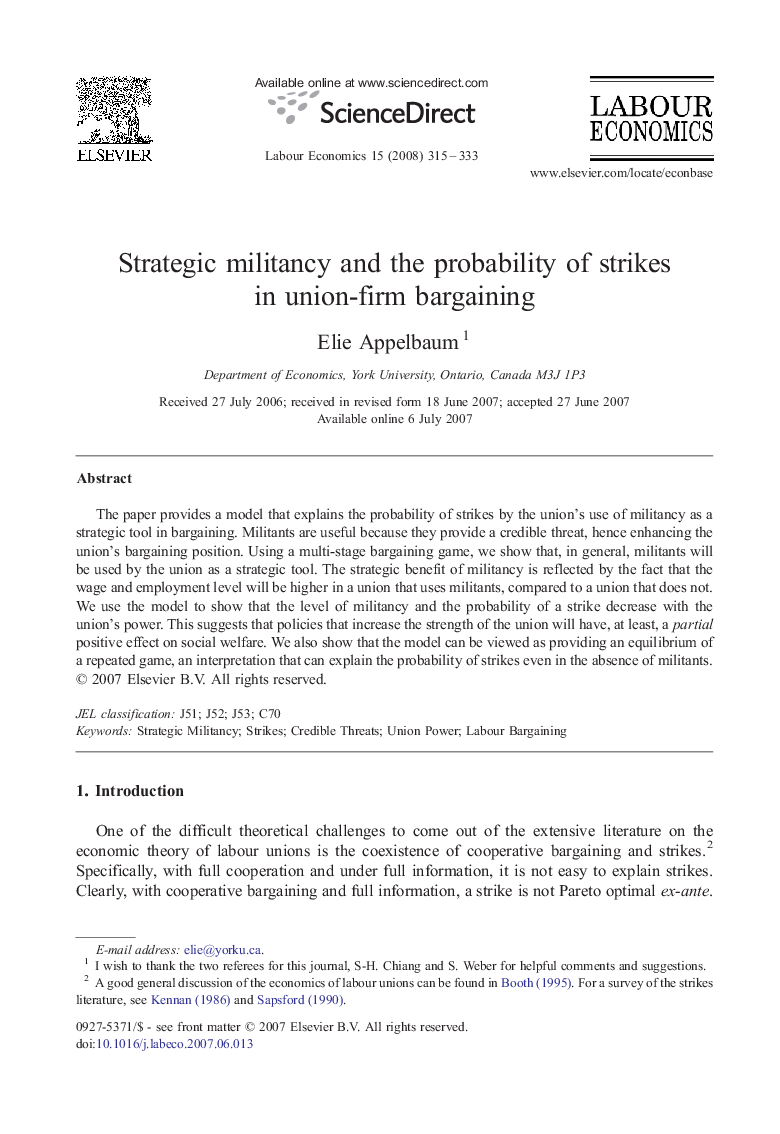| Article ID | Journal | Published Year | Pages | File Type |
|---|---|---|---|---|
| 972908 | Labour Economics | 2008 | 19 Pages |
The paper provides a model that explains the probability of strikes by the union's use of militancy as a strategic tool in bargaining. Militants are useful because they provide a credible threat, hence enhancing the union's bargaining position. Using a multi-stage bargaining game, we show that, in general, militants will be used by the union as a strategic tool. The strategic benefit of militancy is reflected by the fact that the wage and employment level will be higher in a union that uses militants, compared to a union that does not. We use the model to show that the level of militancy and the probability of a strike decrease with the union's power. This suggests that policies that increase the strength of the union will have, at least, a partial positive effect on social welfare. We also show that the model can be viewed as providing an equilibrium of a repeated game, an interpretation that can explain the probability of strikes even in the absence of militants.
